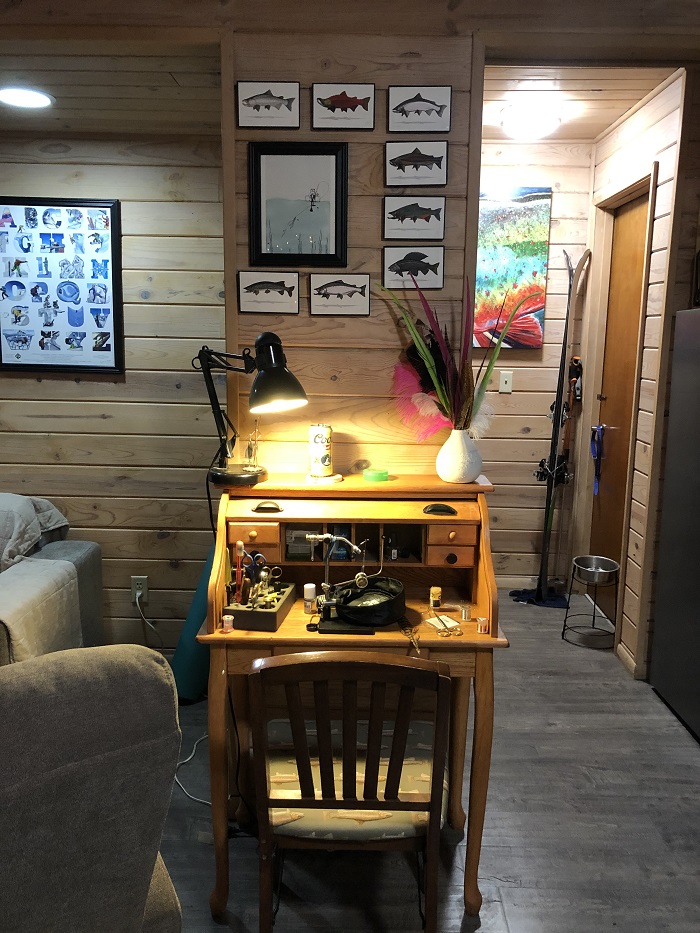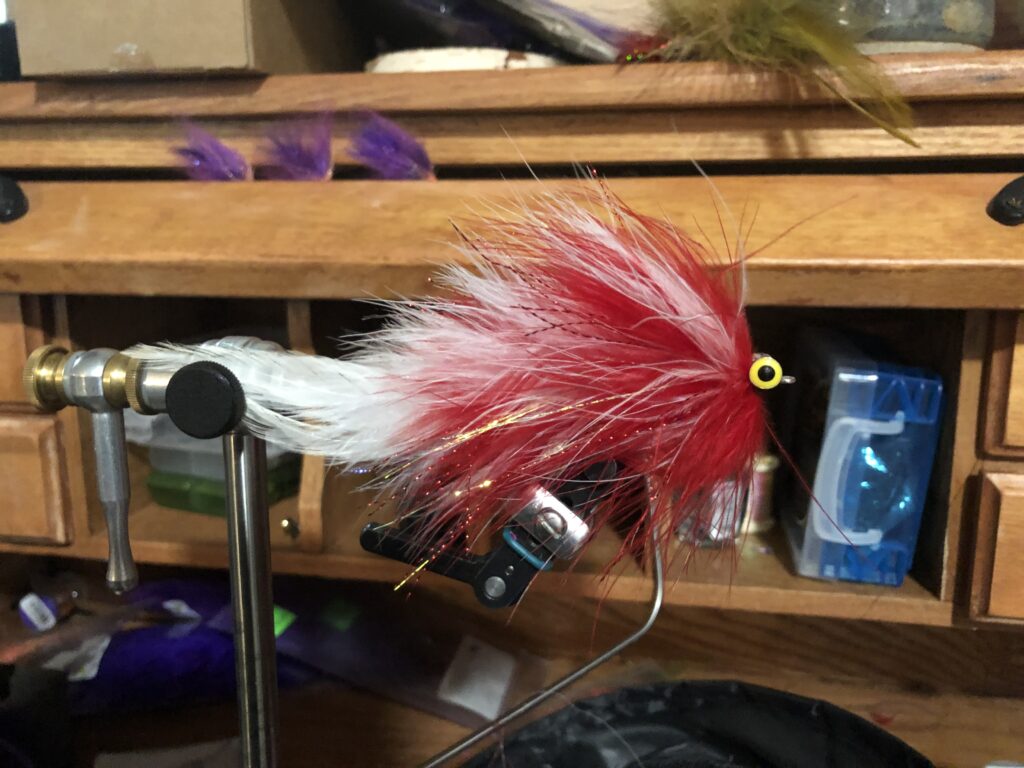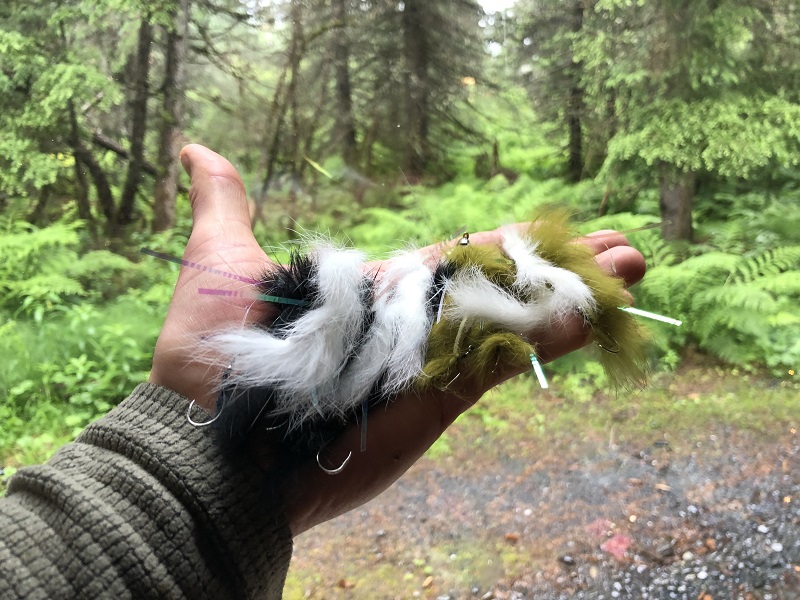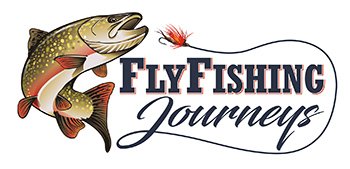Eric Booton grew up in the mountains of Colorado, and now calls Southcentral Alaska home. With deep roots in fishing and the outdoors, as an angler, he strives to create a deeper connection with angling by catching fish on flies he ties himself.
He is inspired by fly tyers in his community, including the Southcentral Alaska Trout Unlimited Chapter and Alaska Fly Fishers. Eric ties flies for fun, his own use and enjoyment, and began a fly tying business selling flies through Etsy, and to individuals looking to gear up for their next Alaskan adventure.
Fly tying has been around for a while. When were your interests peaked?
I was intrigued by fly tying quickly after the fly fishing bug took over because I thought catching fish on my own creations was one heck of a way to add another layer of meaning to the experience. I started fly tying in 2014 as a way to keep myself occupied following a shoulder surgery.
What are some of the fish species you tie flies for?
Most of my flies are tied with my local fisheries in mind – rainbow trout, Dolly Varden, Arctic grayling, and northern pike. But they’ve done the trick for numerous species of trout, bass, pacific salmon, panfish, and goldfish.

What was your first fishing experience/When did you begin fly fishing?
I grew up fishing, and got my first fly rod at the age of 13. My dad and I went fly fishing on many occasions after that, but I had more success creating bird nests out of my line than connecting with fish. It wasn’t until my junior year in college that I truly began dedicating time to my fly rod when it proved to be the perfect low impact adventure pursuit that my life needed.
What is currently on your vise?
My vise is currently packed in my makeshift travel bag as I’ve been gallivanting across Alaska the past couple of weeks chasing summer opportunities. However, the most recent pattern I tied was a custom micro sculpin for an angler traveling to Bristol Bay from Illinois.



Tell us about any flies that you’ve designed yourself.
Many of my patterns are honest Alaska staples that every tier up north ties, others are productive classics with my own twist, but a few I would claim to be unique to me, though they undoubtedly build off of existing patterns.
One flashy, gawdy pattern I’m particularly pleased with came to me while I was napping in a recliner following another shoulder surgery in 2019. I’d found success the prior summer targeting pike and was cooking up a fresh pattern to crank out once I was back at the vise and started piecing together a flashy, flowy, beast that I was confident would do the trick. I’d equate it to an articulated popsicle with some embellishments but it was the first pattern I tied that spring and gave me something to look forward to while I was stuck in a sling.
What is it that draws you to fly fishing and fly tying?
I’ve always been attracted to the exploration, creativity, and inspiration that fly fishing and fly tying offer me.
I find pursuing fish on the fly to be an enjoyable way to interact with the world around me, it’s a passion I can take anywhere and find personal fulfillment while experiencing new places.
Both at the vise, and with a fly rod in my hand, I’m free to do as I please – experiment with colors, try new water, and so I please – but, most importantly to me, I find time where my soul and mind thrive.
Who is your biggest inspiration/mentor?
My biggest mentors have been the fly tyers in my community, with the Southcentral Alaska Trout Unlimited Chapter and Alaska Fly Fishers, who gave me the skills to kick start my fly tying at events and fly tying nights. I owe everything I’ve learned to them and I repay the favor by introducing people to fly tying and teaching patterns often.
What is your favorite book about fly tying? Why?
I don’t have any fly tying books that I personally have used, but I’m a big fan of the monthly fly pattern recipe in Fish Alaska Magazine from Mossy’s Fly Shop. They are well done and the patterns are specific to my fisheries, my fly boxes are full of them!

What are some favorite fly tying resources that you direct others to?
While there are more resources at our fingertips than I care to comprehend, nothing can beat the hands-on instruction of others. Fly shops, fly fishing clubs and Trout Unlimited chapters are all great places and I find a simple YouTube search can be very helpful if there is a specific pattern or skill you wish to learn.
What was the first fly pattern you tied?
The first fly I tied was a total hack experiment. I stripped the material off the hook of a fly that was falling apart and tied on a clump of my dog’s tan fur with thread from my sewing kit. Impressively, I caught my first Arctic grayling on it.
Is there a fly style that you are still interested in learning about?
There’s a lot for me to learn yet, and I’d like to have more dry fly patterns under my belt.
What advice would you give to someone thinking about beginning fly tying?
If you’re interested, give it a shot! Start small with some basic patterns you like to fish so you don’t break the bank and be resourceful! Talk to your fly tying friends, many of us are eager to lend old vises and tools, and maybe even pass along some unused materials.

What’s the first fly you typically recommend a beginner to learn to tie?
The basic Woolly Bugger or Egg Sucking Leech is where I suggest Alaska fly tyers start. They are easy, effective for several species, and will help teach the basics for most patterns.
Favorite and least favorite thing about tying flies?
Favorite: kicking back in my chair to admire a new pattern.
Least favorite: breaking thread, especially during a crux step.
What fly tying technique took you the longest to learn?
Oddly enough, using a whip finish tool to finish my flies. I learned to finish my flies using my fingers to whip finish and took to using a whip finish tool to better teach others. I’ll admit, the whip finish tool has improved my flies.

Let’s talk about fly tying equipment and materials:
Tell us about your scissors. Do you use a generic brand or specific style, and why?
As long as they are sharp and clean, I can’t say I’m all that picky.
What about bobbins: tension or no tension?
Whatever is easiest for the tier, especially if they are learning. But, I find tension important for a clean, crisp fly and many techniques require it.
Your tying vise is practically sacred. What is your go-to, and why? How many did you try before deciding this was your favorite?
I’ve used a wide variety of inexpensive vises and some nicer, albeit still affordable, vises. I have owned 4 and gifted 2 to friends, but the Renzetti Traveler is the one I’ve used the past 3 years and I can’t say I’ve considered an upgrade.
Where do you source your fly-tying supplies? Why do you choose these resources over others?
I source my supplies from my local fly shops and friends in the industry who operate online fly tying supply shops.
Do you have a particular type of hackle that you prefer over others?
I’m pretty impartial and tend to use what’s on hand.
Do you prefer synthetic or natural materials when you use it? (dubbing, hackle, bucktail, etc.)
In my mind both synthetic and natural materials have their time and place, I use both regularly.
What brand of hooks do you prefer to tie on?
No preference for me other than whatever hook is appropriate for the pattern.
What is your preference in head cement and resin?
I primarily use Hareline Head Cement, it’s treated me well and I am a fan of the brush for application.
Let’s talk about thread… How should a tier approach choosing the right thread for their fly?
I keep it basic with my thread and don’t have every color and size under the sun. I think the fly pattern and type of material/technique it calls for pretty quickly identifies what thread is appropriate and recommends turning to instructional pattern resources for guidance or adjusting based on your own experience.
What’s the one fly tying material you can’t live without? What’s so special about it?
I’d have to go with marabou! Its natural qualities for movement are unmatched and it can be applied in so many different ways to bring a pattern to life.

Do you tie for personal use, or do you sell your flies?
I have gotten to the point where I have more flies than I will ever need and I want to keep tying. A couple years ago I launched a small shop, 49Flies, to sell my flies at affordable rates to help cover the cost of materials and keep tying.
I sell some of my favorite patterns on Etsy and have had the privilege to take on larger custom orders to prepare anglers traveling to Alaska.
It has been a unique experience to see where my flies land and the diversity of species they catch.
What is your favorite fly pattern to tie? What is the intended species for the fly?
For the last couple years “Spike the Gremlin”, an intruder pattern creation of mine that I have primarily kept for myself. It’s intended for rainbow trout, but it’s received fanfare from Arctic Grayling, Chinook, and Coho as well.
Where can people find your work?
You can visit my fly shop, 49Flies, or keep up with what’s on my vise and request custom orders at my Instagram, @49flies_alaska
Any parting thoughts you’d like us to add?
Fly tying and fly fishing have a history of demanding perfection. There are plenty of tiers and anglers who will tell you something has to be done a specific way which can suck the fun right out of it. Start simple, have fun, do what excites you.





